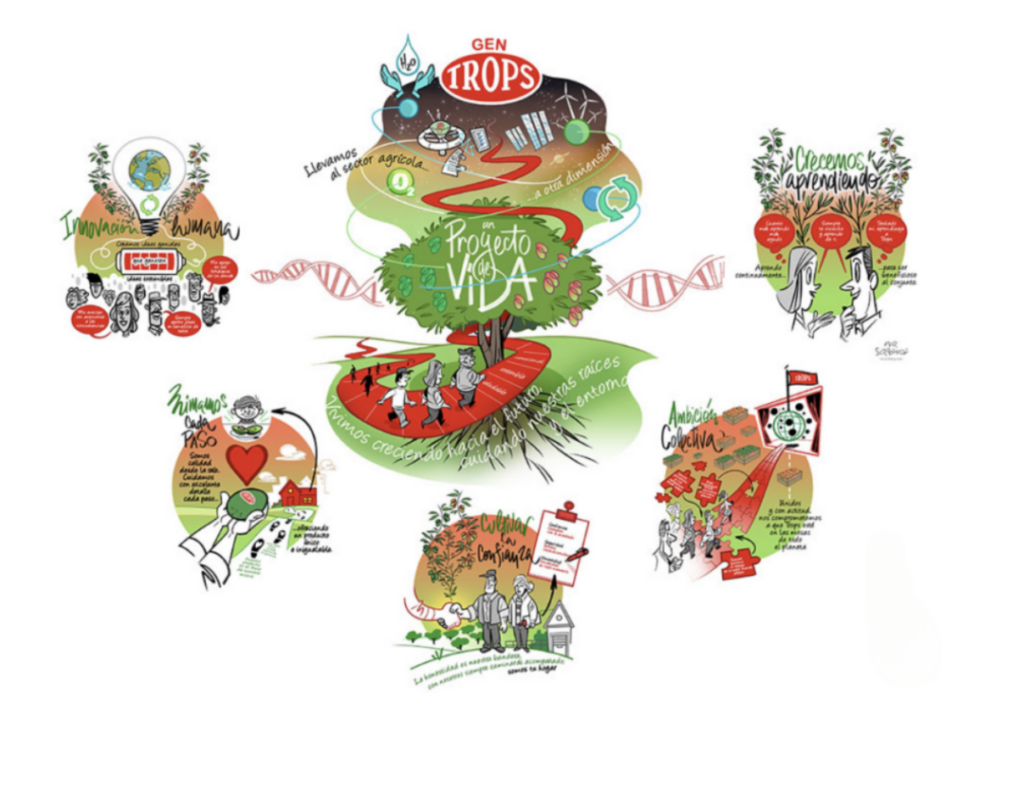Cultural transformation in a company is a complex and multifaceted process that goes beyond simply implementing new values or principles. For HR professionals, it is essential to understand that the new organizational culture must become a tangible reality, applied to the real business challenges the company faces.
Organizational culture is the set of beliefs, values, and behaviors that define how things are done within a company. When an organization embarks on a cultural transformation process, it aims to adapt to a changing environment, improve its competitiveness, and foster a more collaborative and motivating work environment.
However, many cultural transformation initiatives fail because they remain purely theoretical. For the new culture to have a real impact, it must be aligned with the company’s strategic objectives and applied to concrete situations. This not only helps employees understand and adopt the new culture but also demonstrates its relevance in the organization’s daily operations.
Most cultural transformation processes follow these steps:
- Identification of key challenges: The first step is to identify the specific challenges the company faces. These may include communication problems, lack of innovation, resistance to change, or difficulties in cross-departmental collaboration. In other words, analyzing what is missing or what is being done poorly.
- Development of training programs: Once the issues have been identified, training programs are developed that promise to “teach” the new cultural values and provide practical tools to apply them.
- Measurement and evaluation: Next, metrics are established to assess the impact on the business. These may include employee satisfaction indicators, retention rates, productivity, and financial results.
And here comes the interesting part: These metrics often reveal that the new culture has not truly permeated the organization; or that the process drags on indefinitely; or that employees do not feel they are part of the change; or that it is not sustainable over time… And, of course, that the new culture is not aligned with real business challenges.
Cultural Transformation at Madavi
Madavi’s approach to cultural transformation is radically different—Madavi is about changing the way we change. Below, we share some real cases.
“We ensure that the new culture becomes a reality by applying it to real business challenges.”
We align culture and business simultaneously, ensuring that changes are both effective and scalable. How? We change culture through a challenge, making it tangible—a tool to generate results.
Our transformation approach is based on a simple idea: a system moves toward what it explores. This means that companies can grow and develop more quickly if they focus on what they already HAVE and what they WANT, rather than on their problems. The questions people ask themselves, along with the vision of a desirable future they imagine, are two key elements that facilitate cultural change within organizations.
Our approach is narrative: each person and organization is like a blank book waiting to be written. It is essential to help people reconnect with their dreams and what they truly desire, rather than focusing on what they don’t want. At a group level, individual and team aspirations within organizations are shared. How do they want the organization to be?
Madavi’s methodology is not about transforming people—although this may be a visible outcome. It is based on collaborative discovery of what makes an organization more effective. By fostering and implementing an appreciative culture, the principles of abundance (focusing on strengths) and simultaneity (many, at the same time) simplify the process: it’s about recognizing the best that exists and engaging everyone toward that compelling vision of the future.
It is a process where people actively commit, experiencing the benefits of the new culture in real time.

Successful Cultural Transformation Cases with Madavi
We have numerous success stories in cultural transformation. You can find some of them in the Cases section of our website, including:
Vegalsa, whose goal was to become the best in customer service and increase sales (see case). Weleda, which aimed to design strategies to boost sales (see case) or Red Eléctrica de España (REE), focused on accelerating its major strategic challenge for the next five years (see case). AQ Acentor | Aquila Capital, which partnered with Madavi to define the key success factors for their future projects. Janssen, committed to delivering exceptional customer value and maintaining market leadership (see case). Eroski, striving to become the number one in customer satisfaction, achieving outstanding results (see case).
Trops, with whom we defined their principles and purpose (see case).
In all these cases, cultural transformation has been lived and applied to real business challenges. The key is to make culture a strategic asset that guides every decision and action within the organization.

